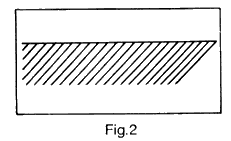Burnishing 'cold-works' the metal of a machined part. Tool marks are rolled out. Grain structure is condensed and refined, and compacted surface is smoother, harder and longer wearing than ground or honed surfaces.
Rolling action greatly reduces surface porosity, pits and scratches which could hold reactive surfaces or contaminates. As a result the corrosion resistance of burnished surface is higher than the open surfaces produced by grinding or honing. Depending on the type of material being burnished surface hardness can be increased by as much as 1O-Rc. This increase often eliminates the need for heat treating or surface treatment as a means of improving wear resistance.
Due to plastic deformation in the roller burnishing operation, residual compressive stresses are inducted in the surface of the part. This compressive stresses greatly increase the strength properties and fatigue life of the part, because any forces on the part must overcome these residual stresses, as well as the tensile strength of the material, before fatigue conditions occur.

